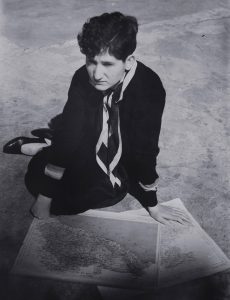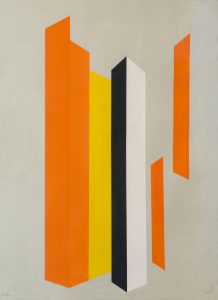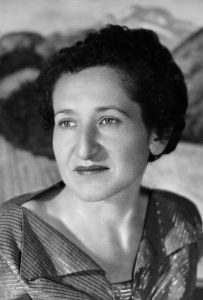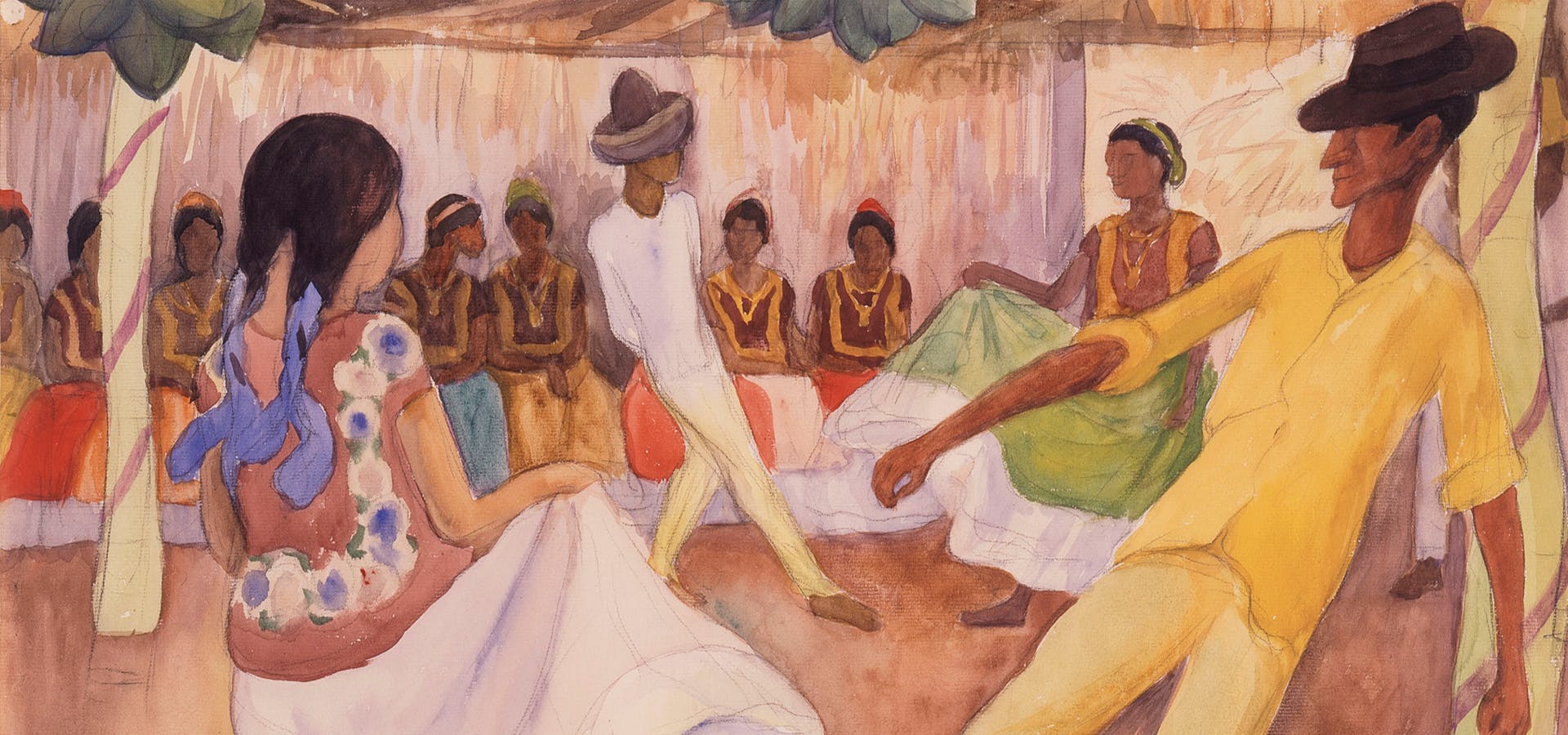The Skirball Cultural Center announces Another Promised Land: Anita Brenner’s Mexico, on view September 14, 2017 through February 25, 2018. This exhibition illuminates the life and work of one of the most fascinating cultural figures of 20th century Mexico, Anita Brenner (1905–1974). A Mexican-born journalist, art historian and anthropologist of Latvian Jewish descent who spent part of her youth in Texas, Brenner chronicled the Mexican Renaissance of the 1920s and played a vital role in introducing Mexican art and culture to American audiences. Through more than 150 objects—including artworks by close friends Diego Rivera, José Clemente Orozco, Edward Weston, Jean Charlot and Frida Kahlo―the exhibition underscores her efforts to build cultural understanding between the United States and Mexico.

As the child of Jewish immigrants in Mexico, and herself an immigrant to the United States, Brenner often found herself in the position of the outsider. This sense of self informed much of her work. She fought against prejudice she faced as a Jewish Mexican-American, she worked tirelessly—through her books, articles, poetry and the tourism magazine she founded and edited—to create a favorable image of Mexico in the minds of Americans.
Another Promised Land: Anita Brenner’s Mexico opens a conversation about the complexities of nationality and identity on both sides of the border by weaving together Brenner’s story with the history of Mexico and its relationship with the U.S. in the 20th century.
“The Skirball Cultural Center is honored to participate in the Getty’s Pacific Standard Time: LA/LA, which fully aligns with our mission to bridge people of diverse heritage and history,” remarked Robert Kirschner, Skirball museum director. “Another Promised Land: Anita Brenner’s Mexico invites us to learn about our neighbors while challenging us to consider how we represent cultures that are not our own.”
Organized by Skirball exhibition curator Laura Mart and guest curator Karen Cordero, an independent curator and professor of art history at the Universidad Iberoamericana in Mexico City, the exhibition will be organized in five sections:

A Jewish Girl of Mexico: This traces Anita Brenner’s background and early childhood. Born in 1905 in Aguascalientes, Mexico, to Latvian Jewish immigrant parents, Brenner moved as a young girl to San Antonio to escape the violence of the Mexican Revolution (1910–1920). In both Mexico and the U.S., Brenner was ostracized for her foreignness and Jewishness. This dual discrimination found its way into Brenner’s consciousness of her identity as both a Mexican and a Jew.
Brenner returned to Mexico City in her late teens, where she assumed a prominent role in the world of post-revolutionary Mexican, American and European thinkers, artists and writers of the avant-garde. She became an observer, recorder and interlocutor of artists like Diego Rivera, Frida Kahlo, José Clemente Orozco, Jean Charlot, Tina Modotti and Edward Weston, developing friendships and flirtations with many of them. This first section of the exhibition includes portraits of Brenner by some of these artists, as well as bilingual correspondence and family photographs, and traces Brenner’s Mexico City network through photographic portraits and other artworks.
 Idols Behind Altars: In 1929, Brenner wrote the book Idols Behind Altars, a seminal work on Mexican modern art. In it she combined folklore and history to paint the story of Mexico in broad strokes, recording her firsthand impressions of the artists, their work and their dramas. Brenner commissioned Weston and Modotti to take photographs of Mexican art and cultural sites to serve as illustrations for the book. Its vision of Mexican art and culture inspired Russian filmmaker Sergei Eisenstein to create his famous film project ¡Que Viva Mexico!, an unfinished legend of modernist cinema.
Idols Behind Altars: In 1929, Brenner wrote the book Idols Behind Altars, a seminal work on Mexican modern art. In it she combined folklore and history to paint the story of Mexico in broad strokes, recording her firsthand impressions of the artists, their work and their dramas. Brenner commissioned Weston and Modotti to take photographs of Mexican art and cultural sites to serve as illustrations for the book. Its vision of Mexican art and culture inspired Russian filmmaker Sergei Eisenstein to create his famous film project ¡Que Viva Mexico!, an unfinished legend of modernist cinema.
This section of the exhibition includes several of the paintings, drawings and prints that appeared in Idols Behind Altars, as well as pre-Columbian and folk art objects similar to ones that Brenner chose to illustrate the book. It will also feature more than a dozen of the original Weston and Modotti photographs commissioned by Brenner, as well as clips from Eisenstein’s ¡Que Viva Mexico!
Art and Revolution: Brenner and her cohorts established the imagery that would come to define the Mexican Revolution and capture the popular imagination through writing, art and music. In the 1920s, muralism emerged as an art form particularly well-suited to political content. Artists such as Rivera, Orozco, David Alfaro Siqueiros and Charlot painted thousands of square feet in government buildings around Mexico. The popularity of these projects helped these artists land mural commissions in the U.S., which resulted in some of the greatest and most controversial public works of art in the nation.

This section of the exhibition looks at the development of the mural movement in the 1920s through preparatory materials and photographs. It takes a close look at Rivera’s Rockefeller Center controversy—the mural he created that was chiseled off two years after he painted it—which Brenner reported on in depth for the New York Times. Also included are visual records of and reactions to the Mexican Revolution, including prints by Leopoldo Méndez, Orozco and Rivera, and materials from The Wind That Swept Mexico, Brenner’s 1943 book on the Mexican Revolution. Finally, this section considers Brenner’s engagement with left-wing activism in the 1930s, concentrating on her journalistic coverage of the Spanish Civil War and her role in securing Leon Trotsky’s asylum in Mexico.
Projections of a Changing Mexico: Starting in the 1930s, Brenner worked to promote tourism in Mexico using the country’s cultural heritage as a point of attraction. Her popular guidebook Your Mexican Holiday(1932) and tourist magazine Mexico / this month (1955–1971) encouraged Americans to travel south of the border to experience Mexico and its people firsthand. Her children’s books set in Mexico used sources from folktales to tell stories of courage, virtue and magic for English-speaking audiences.

This section traces how imagery and texts circulated by Brenner and her circle, from the 1920s through the 1970s, shaped foreigners’ understanding of Mexican culture. On view are works by Rivera, Weston, Lola Cueto and Miguel Covarrubias that reveal the influence of indigenismo on their art; Brenner’s books for children and her magazine Mexico / this month; and a selection of works by well-known Mexican photographers such as Héctor García, Nacho López and Manuel Álvarez Bravo, which appeared in Mexico / this month. The last subsection features art from the 1950s though 1970s by several of Brenner’s friends, including Mathias Goeritz, Leonora Carrington, Pedro Coronel and Myra Landau. These works, which reflect Mexican artists’ involvement in international movements like geometric abstraction and surrealism as well as the substantial emigration of Europeans to Mexico, provide a counterpoint to the indigenista aesthetics and subject matter of work more commonly associated with Mexican art of the early 20th century.
 Roots in the Land: The closing section of the exhibition looks at Brenner’s final years, when she returned to her family’s ranch in Aguascalientes, Mexico. It chronicles her efforts to revitalize the ranch as a commercial agricultural operation with elements adapted from the Israeli kibbutz model, and considers the way that Brenner dealt with the legacy of the Mexican Revolution, particularly its call for land justice.
Roots in the Land: The closing section of the exhibition looks at Brenner’s final years, when she returned to her family’s ranch in Aguascalientes, Mexico. It chronicles her efforts to revitalize the ranch as a commercial agricultural operation with elements adapted from the Israeli kibbutz model, and considers the way that Brenner dealt with the legacy of the Mexican Revolution, particularly its call for land justice.
For more on the exhibit and to plan your visit to the Skirball, click here.










